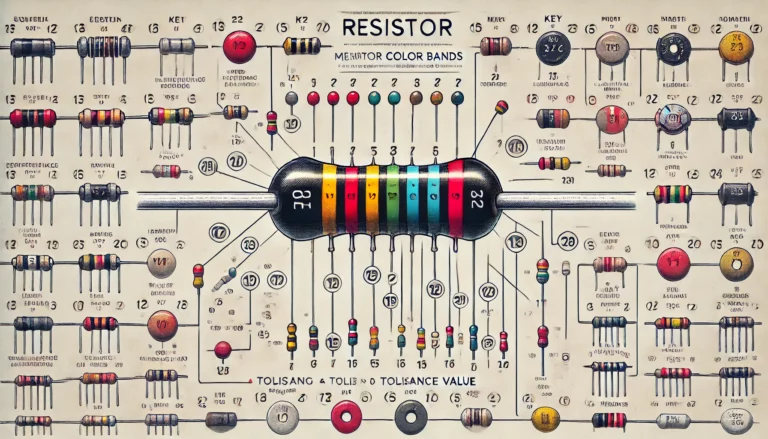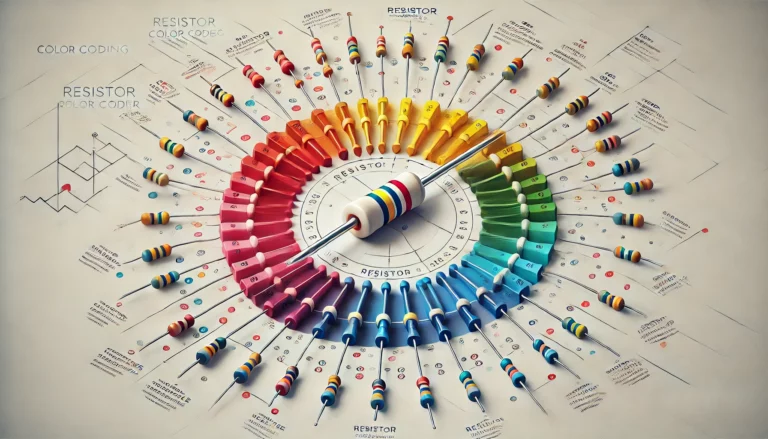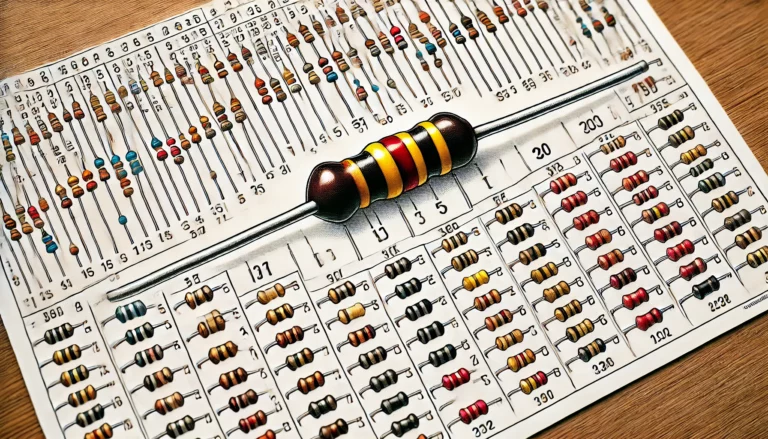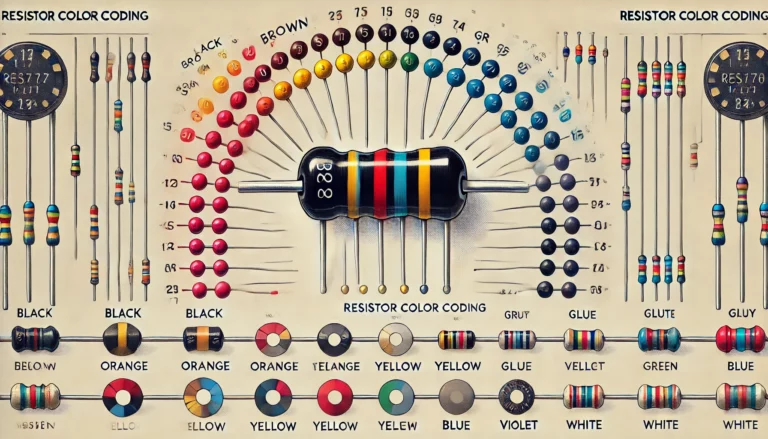How to Calculate Resistor Color Code
Understanding how to calculate resistor color codes is an essential skill for anyone involved in electronics. Resistors are ubiquitous components that play a crucial role in controlling the flow of current in circuits. This guide will walk you through the process of calculating resistor values using color codes, making it easier for you to design and troubleshoot electronic circuits.

The Basics of Resistor Color Codes
Resistors use a color-coding system to indicate their resistance values. This system is standardized and universally recognized, which ensures consistency across different manufacturers. Each resistor has several colored bands that represent its resistance value and tolerance.
Understanding the Color Bands
A typical resistor will have four to six color bands. Here’s what each band represents:
1. Significant Figures: The first two or three bands represent significant figures of the resistor’s value. 2. Multiplier: The next band indicates the multiplier, which is a factor by which the significant figures are multiplied. 3. Tolerance: The final band shows the tolerance, indicating the accuracy of the resistor’s value.
The Color Code Chart
Here is a quick reference for the resistor color code chart:
| Color | Digit | Multiplier | Tolerance |
|---|---|---|---|
| Black | 0 | x1 | |
| Brown | 1 | x10 | ±1% |
| Red | 2 | x100 | ±2% |
| Orange | 3 | x1,000 | |
| Yellow | 4 | x10,000 | |
| Green | 5 | x100,000 | ±0.5% |
| Blue | 6 | x1,000,000 | ±0.25% |
| Violet | 7 | x10,000,000 | ±0.1% |
| Gray | 8 | x100,000,000 | ±0.05% |
| White | 9 | x1,000,000,000 | |
| Gold | x0.1 | ±5% | |
| Silver | x0.01 | ±10% | |
| None | ±20% |
How to Calculate Resistor Color Code
Calculating resistor color codes involves a few simple steps. Let’s break it down:
Step 1: Identify the Color Bands
Identify the color bands on the resistor. Hold the resistor with the tolerance band (usually gold or silver) to the right.
Step 2: Convert Colors to Digits
Use the color code chart to convert the first two or three bands into their corresponding digits.
Step 3: Determine the Multiplier
Identify the multiplier band and convert it to its numerical value using the color code chart.
Step 4: Calculate the Resistance Value
Combine the significant figures and multiply by the multiplier to get the resistance value.
Step 5: Determine the Tolerance
Check the final band to determine the tolerance of the resistor.
Example Calculation
Let’s go through an example to illustrate the process. Suppose you have a resistor with the color bands: Red, Violet, Yellow, and Gold.
- Identify the Bands: Red, Violet, Yellow, and Gold.
- Convert Colors to Digits: Red (2), Violet (7) = 27.
- Determine the Multiplier: Yellow (10,000) = 27 x 10,000 = 270,000 ohms (270 kΩ).
- Determine the Tolerance: Gold = ±5%.
So, the resistor’s value is 270 kΩ with a tolerance of ±5%.
Advanced Topics: Resistors with More Bands
Some resistors have more than four bands, which provide additional information.
Five-Band Resistors
Five-band resistors offer more precise values. The first three bands represent the significant figures, the fourth band is the multiplier, and the fifth band is the tolerance.
Six-Band Resistors
Six-band resistors include an extra band that indicates the temperature coefficient, which shows how much the resistor’s value changes with temperature.
Example of a Five-Band Resistor
Consider a resistor with the bands: Brown, Black, Black, Red, and Brown.
- Significant Figures: Brown (1), Black (0), Black (0) = 100.
- Multiplier: Red (100) = 100 x 100 = 10,000 ohms (10 kΩ).
- Tolerance: Brown = ±1%.
So, the resistor’s value is 10 kΩ with a tolerance of ±1%.
Tips for Remembering Resistor Color Codes
Memorizing resistor color codes can be challenging, but here are some tips to help:
Mnemonic Devices
Mnemonics are a popular way to remember the order of the colors. Here are a couple of examples:
1. BB ROY of Great Britain had a Very Good Wife:
- Black = 0
- Brown = 1
- Red = 2
- Orange = 3
- Yellow = 4
- Green = 5
- Blue = 6
- Violet = 7
- Gray = 8
- White = 9
2. Better Be Right Or Your Great Big Venture Goes Wrong:
- Each word represents a color in the same order as the first mnemonic.
Visual Aids
Using visual aids like color charts or flashcards can help reinforce your memory. Regularly reviewing these aids can make it easier to recall the color codes.
Practical Applications
Understanding resistor color codes is not just about memorizing colors; it’s about applying this knowledge in real-world scenarios.
Building Circuits
When designing and building circuits, you need to select the correct resistors to ensure the circuit functions properly. Knowing how to calculate resistor color codes helps you choose the right components.
Troubleshooting
In troubleshooting, identifying and verifying resistor values is crucial. Being able to quickly read resistor color codes can save time and prevent errors.
Using Resistor Color Code Calculators
For quick and accurate results, use online resistor color code calculators. These tools allow you to input the colors and get the resistor value instantly. They are especially useful for beginners or when you need to verify your calculations.
Conclusion: Mastering Resistor Color Code Calculation
Learning how to calculate resistor color codes is a valuable skill for anyone working with electronics. By understanding the color bands and practicing with examples, you can quickly determine resistor values and ensure your circuits function correctly. Use mnemonic devices, visual aids, and online calculators to reinforce your learning. With time and practice, calculating resistor color codes will become second nature, enhancing your proficiency and confidence in electronics.





